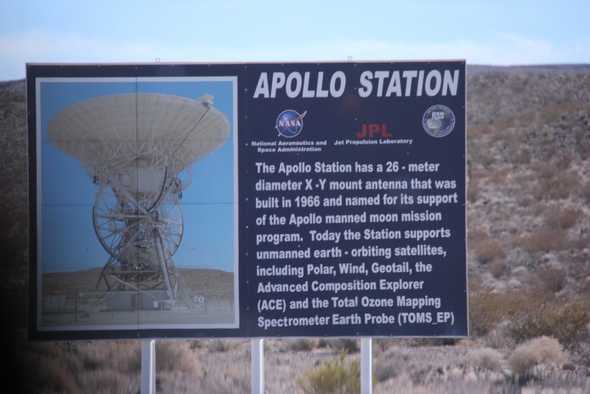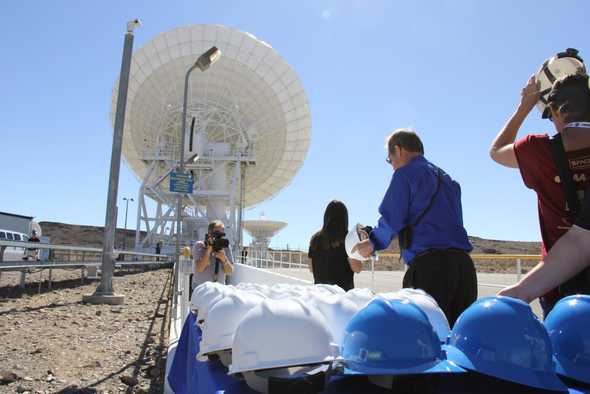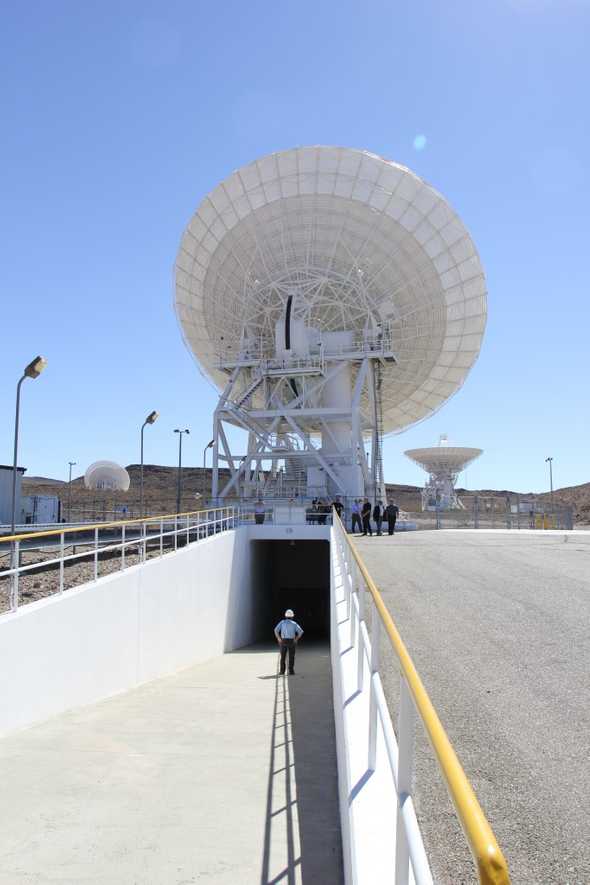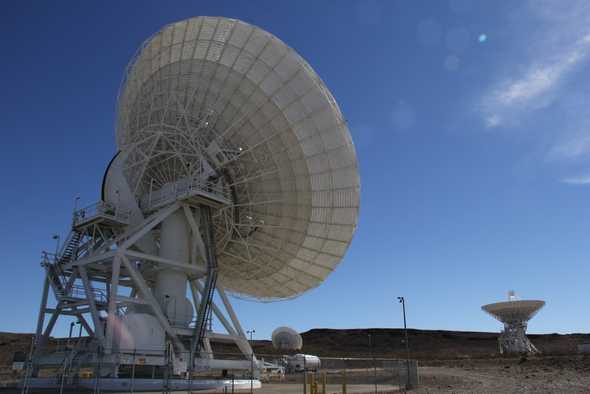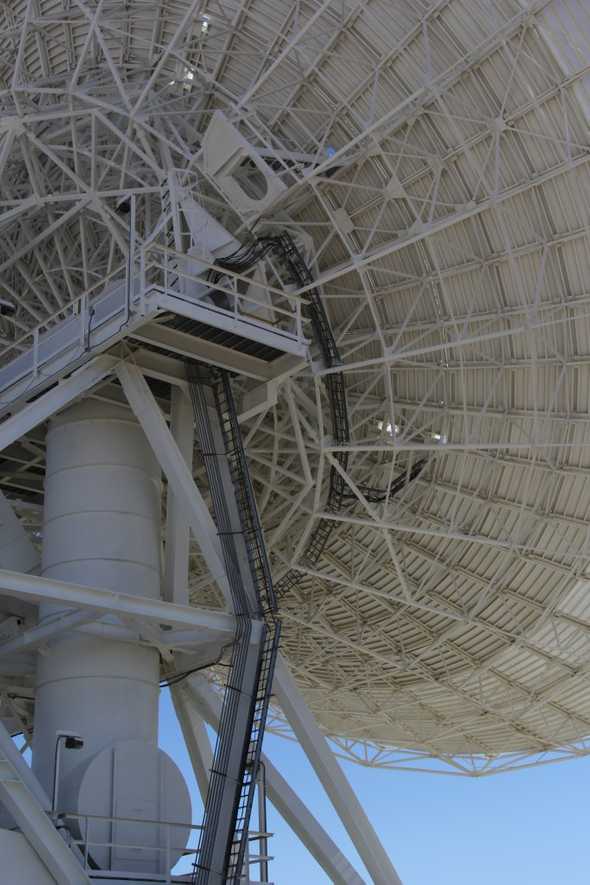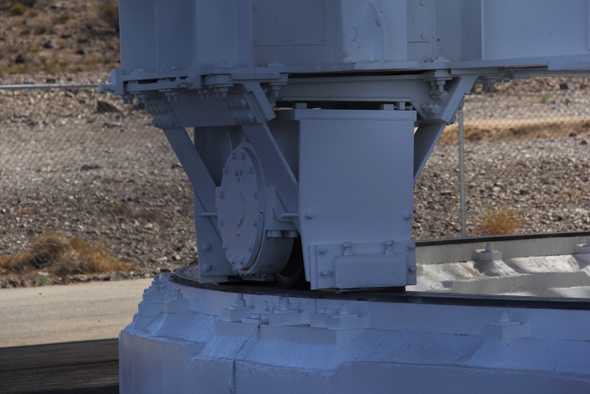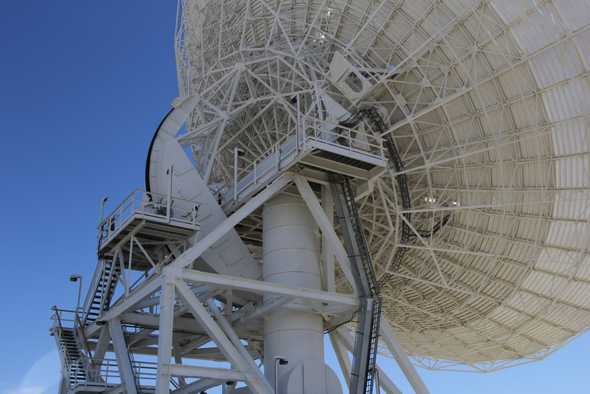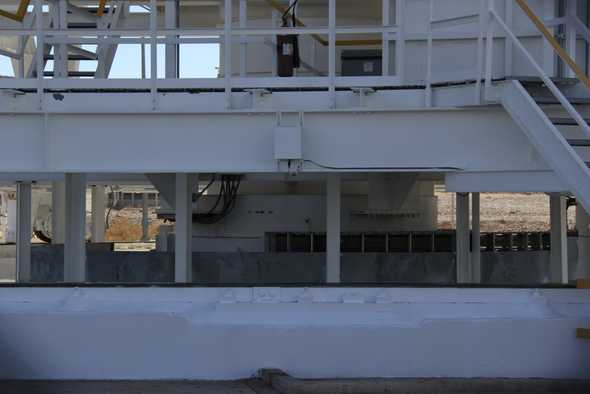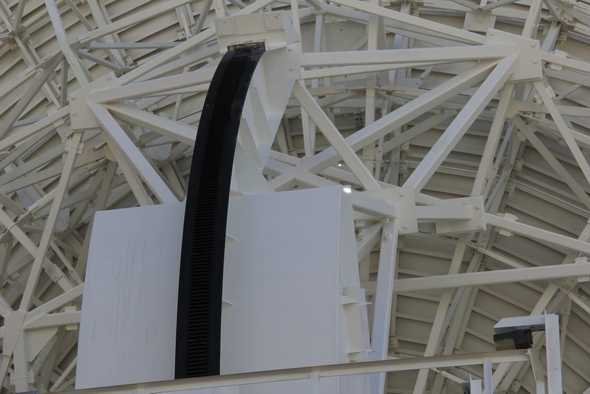Goldstone #DSN: Apollo Valley
Our first stop on the tour was at Apollo Valley where they have a 26-meter and three 34-meter antennas. Apollo Valley was used to support the Apollo manned moon mission program.
We were taken underground where we saw the 34m beam waveguide antenna receiving and processing data from GRAIL-B.
It is called a beam waveguide antenna because it has a large tube that reflects the RF energy from the subreflector off a series of mirrors and down into the pedestal, off more mirrors and into one of the RF packages.
This one is powered by an electric drive. It has four motors, two on each wheel. There are two other idler wheels.
Using a technique called counter-torque, they used opposing motors to wrap up all the slop inside the gear box to prevent bouncing within the gear box. They also do a torque between the two drive wheels to get rid of any slop. This provides a stable platform to point accurately at a spacecraft.
Crews generally work in pairs, with several mechanics working on RF maintenance in the pedestal when the antenna is down for maintenance.
The antenna is remotely operated from the control center with one operator in charge of operating the antenna.
There aren’t very many cables that run from the base up to the dish. Most of the signal processing is done underground. At the top of the apex, power is supplied to the motors that drives the subreflector. All the cables go through a cable-wrap that allows the antenna to rotate +/- 270 degrees.
When the antenna is facing up, they call the position sky. They take noise measurements at the sky so they can utilize their system temperature measurements. They listen at night because the sun increases temperatures and produces additional noise.
When there is an sizable earthquake, they stop tracking. If it is off shift, they will call in personnel to visually inspect the antennas before moving them. If it is a minor shake, they will generally continue operations. On the morning of June 28th, 1992, the 7.4 magnitude Landers earthquake damaged the DSS-12 70m antenna at the Echo site. They had to perform repairs to the subreflector on the 70m antenna. It took six months to get it back online.
Here is a short video of Robert Haroldsson, Antenna & Servo Maintenance Manager at ITT Exelis DSN, talking about the antennas:

